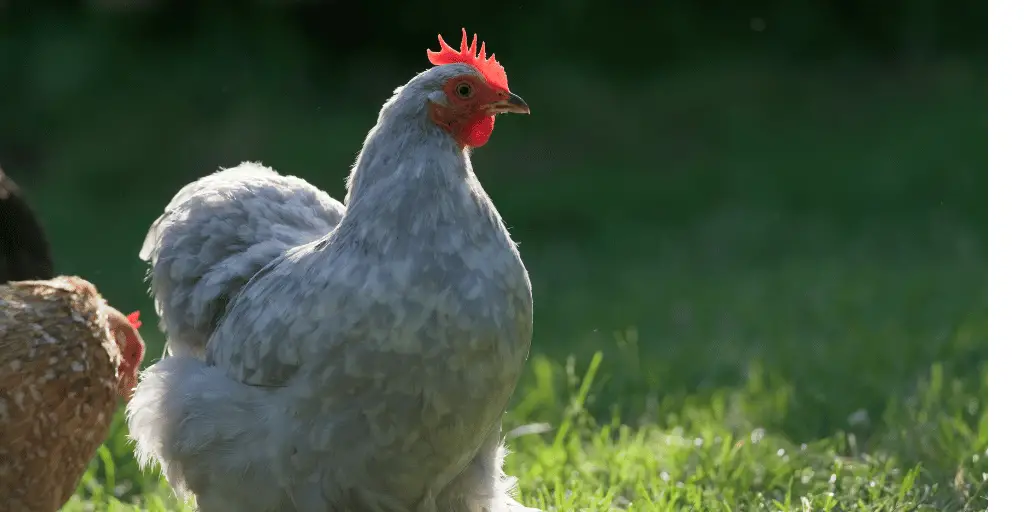Do you want to know all about the lovely Pekin chicken breed? or Are you searching for a chicken breed for small backyard?
If yes, read this Pekin chicken breed profile to understand whether or not it will suit your backyard.
Think of the most pleasant picture you can witness in your backyard, a small chicken with its cute look and funny behavior.
This captivating image is virtually a Pekin Bantam, the breed you will fall in love with the most because of its charm and mildness.
People love Pekin Bantams for their fluffy feathers and friendly nature. These charming birds are an excellent addition to city or country living, forming a fantastic team with you.
This comprehensive guide will explain every part of the Pekin Bantam, starting with their history and care requirements.
This guide will help anyone consider Pekin Bantam to welcome them into their homes without difficulty.
You will love the Pekin variety’s shape and feathers because they resemble a soft toy, lush, and safe, making them appealing to people.
Expressions similar to “walking tea cozies” and “fluffy footballs” are the darling looks on display; they actually draw people in with their undeniable cuteness.
However, their excellent reputation among families as pets makes up another reason for their attractiveness.
People often gravitate towards a pet with a friendly disposition, and Pekin Bantam’s chicken nature, being kind, makes them the best members of the household for children.
Experienced owners of domestic birds and those new to backyard chickens choose them for their elegant look and friendly behavior.
History and Origin of Pekin Bantam Chickens
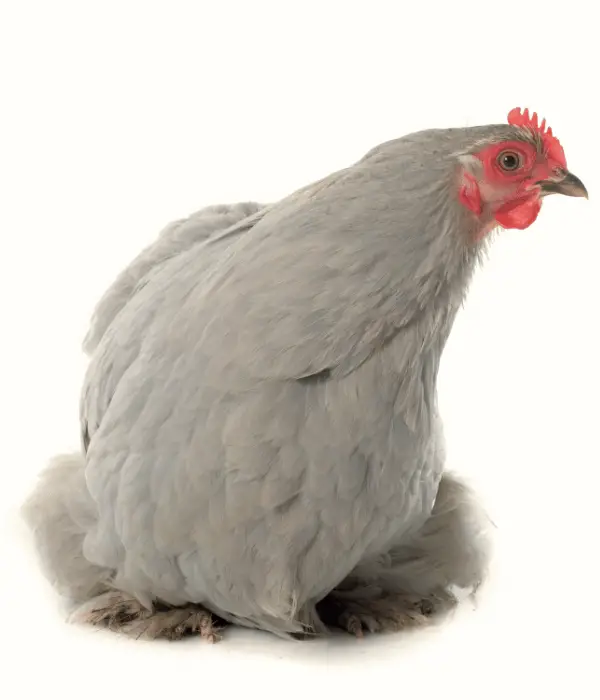
The story of the Pekin Bantam starts in China, specifically in the city that was once known as Peking and is now called Beijing.
Pekin directly refers to the old Chinese capital—a very emotive link. The exact details of their migration to Europe during the 19th century are mixed, adding intrigue to their story.
The narrative goes that British forces stole these bantam chickens from the Chinese Emperor’s private collection in the Summer Palace around 1860, during the Second Opium War.
This tale illustrates nature’s vibrant beauty and grandeur, which is starkly contrasted by the cruelty of fate and the human betrayal experienced by these exotic birds.
On the other hand, a less sensational but equally logical alternative way of their introduction could be earlier. Some historical documents show that someone sent a consignment of birds from China to Europe between 1830 and 1840.
Someone presented a part of these birds to Queen Victoria. According to this story, these immigrant birds went on to one of their breeds, eventually becoming the Pekin Bantams known today.
Despite the exact details of their original trip, these tiny, feathered fowl soon found their way to the United Kingdom.
Cochin and Pekin Relation
There, they were initially known as Cochin Bantams because of the heavy feathering on their legs and feet, which lent them a very attractive home-like look.
That name proved to be misguided, as these birds did not belong to the larger Cochin breed.
Noting this discrepancy and to give more proper respect to their real roots, the UK agreed upon the name Pekin Bantam.
This is a way of recognizing their origins in the Chinese city of Peking. However, Canadians and Americans still commonly use the name Cochin Bantam for these small chickens.
The first Pekin Bantams brought here to the UK were buff-colored; later, the black and cuckoo varietals emerged, further enriching the look.
Their dual origins make Pekin Bantams more than just backyard birds.
The final renaming in the UK focuses on breed identification accuracy. It shows that the Pekin Bantam is unique because it is a “true bantam,” which means it has no larger counterpart.
Lifespan of Pekin Bantam Chicken
Life expectancy is a core consideration for potential adopters considering getting this breed. Specifically, these adorable creatures can live for many years, with lifespans ranging from 5 to 10 years.
The special care and keeping ideal for Pekin Bantams allows some of them to survive longer, even up to the age of 15. The type and amount of food affects a Pekin Bantam’s lifespan it eats.
Its long-term period of life makes it a considerable commitment, as it is usually the case with any other pet. Peking Bantams have a longer lifespan than the average bantam of about 4 to 8 years of living.
Building a secure and clean living environment for them is just as significant, thus keeping them safe from their hatchlings and making it impossible for new diseases to occur.
Periodical health checks by their owners, who identify and treat any health problems on time, can also prolong the life of the Pekin Bantam.
Pekins peak egg-laying period typically falls within the first two or three years, despite a longer lifespan.
The potential for a long life for these enchanting birds thus causes the utmost care of their owners.
Pekin Chickens Recognized Color Varieties or Standards
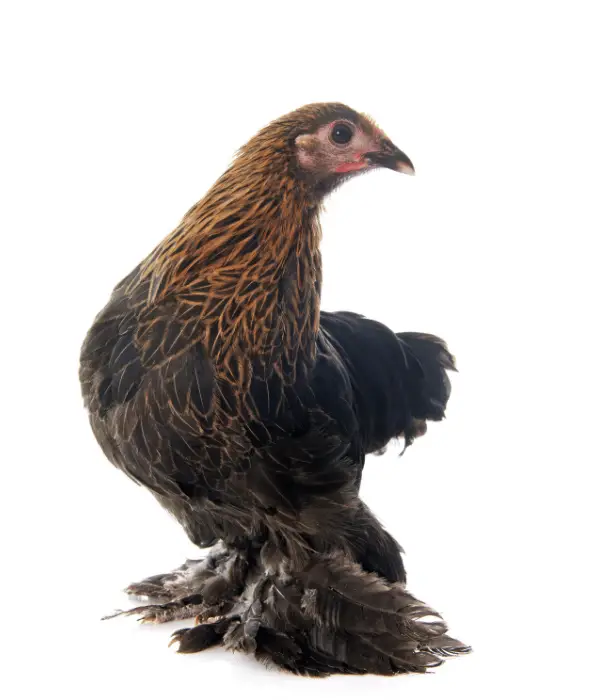
The plethora of hues in the Pekin Bantam breed makes it an undisputed choice.
The array of various plumage colors is comprehensive, and new and fascinating alternates resulting from the breeders’ work constantly enriched the palette.
In the US, significant poultry associations usually consider the Pekin Bantam the bantam equivalent of the Cochin breed for breed standards and recognition.
The American Poultry Association (APA) homologates a certain number of colors appropriate for Cochin Bantams and applies them to Pekin Bantams in the US.
Such colors include Barred, Birchen, Black, Blue, Brown, Brown Red, Buff, Buff Columbian, Columbian, Golden Laced, Lemon Blue, Mottled, Partridge, Red, Silver Laced, Splash, and White.
Breeders nationwide use this compilation of standard colors, and poultry exhibitions regularly showcase it. Pekin Bantams usually include several unofficially recognized colors and many other sought-after varieties.
Those are the eye-catching Cuckoo pattern, the delightful and serene Lavender, the warm hues of Salmon, the variegated Silver Partridge, the Birchen, which presents an interesting contrast; the lines are clean and unbroken in Columbian, the speckled look of Mottled, and the rich and vibrant Wheaten.
Contributing to the diversity of this visual are the frequent appearances of the Frizzled feather type, where the feathers curl outwards, resembling the fluff longer, and appear unique.
This unique feature of Frizzled is clear in many of the color varieties. Thus, it is a more efficient way of giving enthusiasts the possibility of visually stunning bird colors. The wide array of colors and feather patterns of Pekin Bantams attracts poultry enthusiasts.
Temperament or Personality of Pekin Chicken
The peaceful nature of Pekin Bantams and their very docile and friendly temperament make them the most preferred ones for pets than any other breed.
Children love to keep them as pets as small kids can handle them even with no issues. Because of their calm and friendly personalities, they easily bond with people and form attachments.
It is noteworthy that male Pekin Bantams are aggressive only during sexual development. Early handling and training makes these animals friendly towards their own kind.
Even though male chickens are usually aggressive, you can teach them to be calm and gentle. Also, the hens of this rare breed exhibit certain behavioral peculiarities known to most of the chicken keepers.
They are regularly broody, meaning they have a powerful instinct for hatching eggs and sitting on those eggs. Good mothers with a strong will, Pekin Bantams are well-suited for natural incubation.
In addition, this breed is popular in urban areas because of their reduced garden digging compared to other breeds.
Their calm, friendly nature suits quiet living and makes them adaptable to other breeds.
Appearance of Pekin Bantam
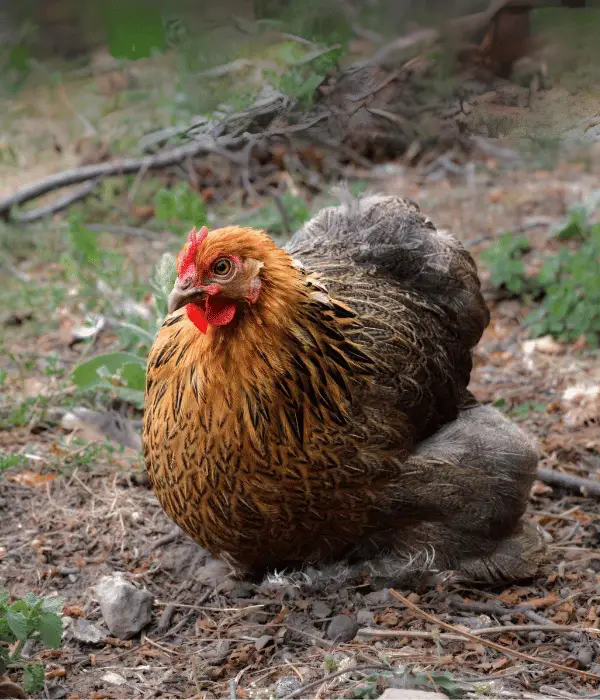
Anyone who sees the Pekin Bantam immediately recognizes it because of its peculiar and lovely look. Their most significant feature is their distinctively rapping form, which is usually described as circular.
Their unusual appearance results from the combination of their convex body shape and feathers. Also, the lovely posture means they kind of stand slightly forward of themselves so that the head is lower than the elaborate tail feathers, producing a peculiar “flair”.
People know Pekin Bantams for their small, fluffy bodies, and friendly personalities. The hocks and feet of the Pekin Bantam birds are full of feathers, like “boots” or “trousers.”
This is the feature that, in particular, makes the bird look sweeter and fluffier. Despite puffiness, Pekin bantams are tiny birds, existing between 8-12 inches tall and weighing about 1.25-1.5 pounds (0.5 – 0.7 kg).
Some sources may consider Pekin Bantams among the smaller bantam breeds, but on the contrary, they continue growing to weights between 1.5 and 2.5 pounds.
Their heads are small, refined, and feature a short, slightly curved beak. The comb is single, small, and oval-shaped. It is also hard, perfectly straight, and has fine teeth.
They have sparkly eyes and seem big compared to their tiny heads. Males of Pekin Bantams, or cockerels, often show longer and more distinct feathers protruding out from the rear feet than those of the females.
This compounding of roundness, cushy feathering, and a made-in-heaven tilt makes sure the significantly recognized and well-liked look of the Pekin Bantam.
Unique Qualities or Benefits of Raising Pekin Chickens
Not to mention, raising Pekin Bantams is a unique endeavor that appeals to a select group of individuals. These gentle birds make great, easy-to-manage pets, even for children.
This calm temperament also contributes to their suitability for smaller backyards and urban environments.
There is the fact that Pekin Bantams are small animals and because of their compact size, they won’t need much space as opposed to bigger breeds; they also won’t be so harsh to gardens when they feed because they rarely dig around in the ground.
One more notable benefit is the strong maternal instinct of Pekin Bantam hens that makes them get broody quickly.
They are excellent mothers, readily sitting on and hatching eggs, making them ideal for those interested in naturally raising chicks.
Their smaller size also translates to lower feed consumption than standard-sized chickens, which can be an economic advantage for owners.
Pekin Bantams often prove quieter than larger chicken breeds, benefiting those in noisier environments.
Of course, the unique appearance and perfect calmness these birds have contributed to them being excellent show birds, especially for those who are new to poultry keeping.
Problems Raising Pekin Bantam Chickens
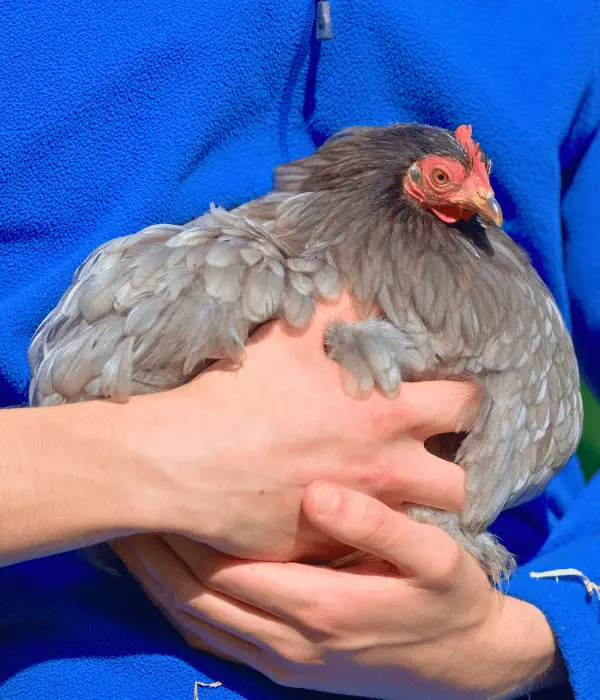
Pekin Bantam care is straightforward; however, breeders need to know about certain problems.
The most terrible trouble is their dense leg and foot feathering. This profuse feathering can quickly become muddy and soiled, especially in wet conditions.
If left unmanaged, this can lead to foot rot or lameness in the birds. To solve this, owners should keep their Pekin’s environment clean and dry.
Sometimes, it may also be necessary to trim the feathers around their feet carefully, particularly during wetter months, to prevent excessive soiling.
Furthermore, egg production is an essential aspect of the inquiry. Pekin Bantams are not likely to be recognized as reliable layers.
They lay few small, white or cream eggs (50-180 yearly). This factor makes them less suitable for people whose main aim is to have abundant fresh eggs.
Pekin Bantams might also face full exposure to extreme heat. Relatively thick feathers cover their bodies; these feathers, while adding a beautiful luster, also make them more vulnerable to overheating in hot weather.
Hot climates require extra shade and water for Pekin Bantams to prevent heatstroke. The Pekin Bantam hens with a substantial proneness to go broody may be a source of advantage for some, but a liability for those who want fewer chicks.
Broody hens hatch chicks, and therefore they cease laying eggs until they have already hatched the chicks. The owners of such hens must either be ready to deal with this or choose the eggs to be laid instead.
FAQs About Pekin Bantam Chickens
What is a Pekin Bantam chicken?
A Pekin Bantam is a small, round, and very fluffy breed of chicken that has its origin in the fresh green paradise of China.
They are a “True bantam”. This means that there is no standard-sized breed of the same breed. Pekins are lovely, not just to own but also for their gentle nature and amazing slim, fluffy legs and feet.
How long do Pekin Bantams live?
The lifespan of Pekin Bantam is typically 5 to 10 years. If they are properly cared for, meaning a nutritious diet and a safe environment, some can live to be 15 years old.
Are Pekin Bantams good egg layers?
In fact, you shouldn’t expect Pekin Bantams to lay many eggs. The egg yield usually varies from 50 to 180 small, white or cream-colored eggs each year. Pekin Bantams are also known for their broodiness and natural brooding abilities.
Are Pekin Bantams good pets?
Actually, Pekin Bantams are among the most favorite of many pet owners. They are relatively less aggressive and hence are a good choice for families with children. Besides this, they are usually quiet and love being petted, making them an excellent addition to any backyard.
What special care do Pekin Bantams need?
One of the most significant things to remember when raising Pekin Bantam chickens is to look after their legs and feet, which are covered by feathers. These feathers can quickly become soiled and wet, which can lead to various health emergencies. Pekins need a clean, dry place to live. Trimming their feet and feathers keeps them cleaner. They are also sensitive to high temperatures and need shade and fresh, cool water, especially during hot weather.
Summary
The Pekin Bantam breed is truly special; their small size, round shape, and fluffy looks, and their unusually soft character are the main reasons for the enthusiasm they generate.
Besides being gentle, they require little space and can thrive in small backyards, despite producing eggs in small quantities; their nurturing qualities make them a top choice for hatchery maintenance.
Those interested in keeping Silkie as pets must remember the importance of taking extra care of their fully feathered extremities, particularly their legs and feet, mainly by keeping them free from dirt and moisture, which is the primary channel for disease transmission.
Their intolerance to the sun’s excessive heat leads the guardian to be watchful as the weather gets hotter.
People raising these adorable chicks usually think it’s exciting and fun, and that the chicks are the best and funniest of their flock.
